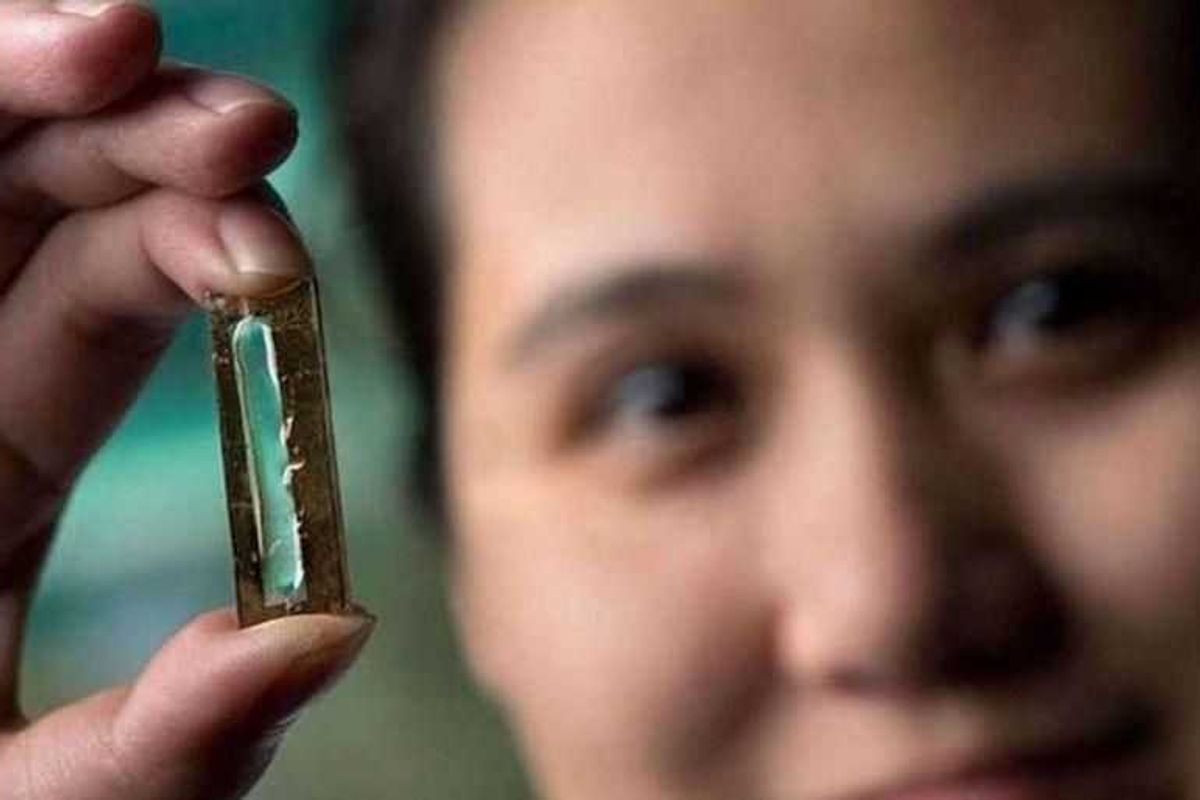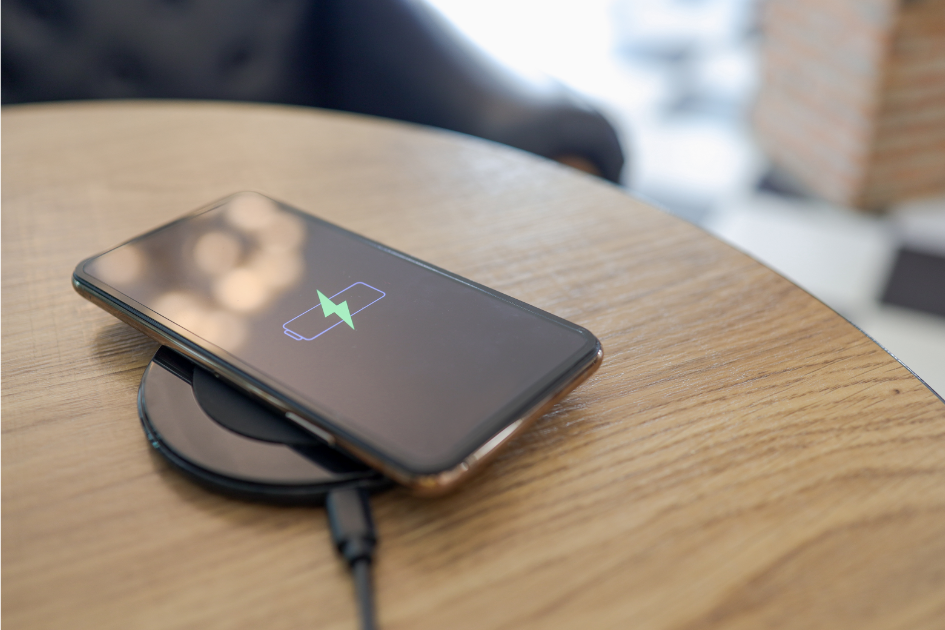Ever wonder how kids with autism see the world? That's all it may take to understand them.

This article originally appeared on 02.19.16
At one of the worst points, she was banging her head on the floor and the walls of her bedroom, raging and crying.
And I was doing the same because I just didn't know what else to do anymore.
Something had triggered a full-on, pupil-dilated tantrum for my then-3-year-old, Emma, complete with hair-pulling and biting — both herself and me.
That's Emma around age 3. That sweet kid having a meltdown? HEARTBREAKING, let me tell you. All photos by Tana Totsch-Kimsey, used with permission.
Feeling just as helpless as I had the last dozen times this happened, I ticked down a mental checklist: Weird food? Wrong clothes? Too hot? Loud sounds? Missing toy? She fitfully stripped down to nothing, finally signaling to me that yes, it was the jammies. She curled up next to me (me, still sobbing) and promptly fell asleep, quiet and stark naked with brilliantly red-purple bruises blooming on her arms.
This is autism. Or one form of it anyway. It has many, many ways of showing itself.
It can be both good and bad. I'll get to the good.
Fully known as autism spectrum disorder, it's a neurodevelopmental quirk that results in various shades of social and behavioral issues. One of the most common challenges across the spectrum is communicating with others; people with autism struggle with the give-and-take flow of conversation, understanding how to interact with others, and processing their own or other people's feelings. They may even seem lost in their own world or unable to express their thoughts or emotions either verbally or nonverbally.
"Lost in their own world" often looks like this. We took over 100 pictures on family picture day, and this was the only useable one.
I have a non-autistic child, too. She's five years older than Emma, and I remember my biggest frustration as a brand-new parent was that I just wished she could tell me what she needed. And it wasn't long before she did: "Mama" quickly became "I have this?" and "Don't like that" and "I can do it myself" and — now — "Oh-em-gee, Mom, get out of my room, please, GOD, ugh!" She's 10; it's fun. She cracks jokes, she rails against gender biases, and she's lined up for honors classes.
But when Emma came along next with an incessant buzz of energy — ripping pages from books presumably for the feel of it, climbing and jumping off tall things presumably for the thrill of it, eating rocks and grass (and just about anything really) presumably for the taste of it — and all of it without being able to tell me anything at all about what she needed ... it took me a long while to understand that autism is not me being terrible at parenting.
What I learned is that Emma calls for a different kind of parenting altogether.
A typical day at home for us includes peanut butter smearing, cabinet scaling, mud eating, and paper ripping. It's a little exhausting sometimes.
Progress actually happened when I let go of what was "wrong" with Emma and started figuring out what to do about it.
Emma was nearly 4 years old by the time she was given an official autism diagnosis. But when the panel of specialists finally handed over their "findings" of autism spectrum disorder after a particularly awful six-hour doctor appointment, I distinctly felt at that point (and still do) that I could not have cared less what they wanted to call it.
The moment of the diagnosis wasn't a big deal to me because it didn't really change anything. By then, Emma was already in speech and occupational therapy and going to preschool, and all of that was helping some. But the autism label did eventually lead us to a kind of therapy we hadn't heard about before.
It's called applied behavior analysis — ABA for short — and that has brought a lot of change.
Some doctors explain ABA as a reward system for when a child does something right, but it's much more than that.
Behavioral scholars and autism experts date ABA treatments back to at least 1968, when a group of university researchers wrote in an introduction for the Journal of Applied Behavior Analysis that ABA interventions could benefit individuals and society.
The treatment is highly individualized, with analysts measuring specific behaviors for each patient, crafting trials to change variables in controlled environments for each patient, and evaluating outcomes for each patient. It's used for both children and adults who have intellectual or developmental issues, and it can help them gain skills in language, socialization, and attention as well as in more educational areas, like reading and math.
And this kid is gonna need more skills than taking selfies ... although she's quite amazing at them, IMO.
ABA is complex stuff. But put super simply, it's empathy on an ultimate level.
It involves patiently observing and trying to understand what a person — often one who can't fully communicate (or even necessarily process the things going on in the world) — feels and thinks.
ABA is putting yourself in that person's place, realizing what is motivating them, and then tinkering with those behaviors using positive encouragement and reinforcement. These are "rewards" of a kind, but not necessarily tangible ones; Emma's greatest motivators are hugs and kisses, high-fives, and tickles.
And wagon rides. And a mom deciding that chewing on a piece of grass to satisfy a sensory need is not so terrible in the big picture.
Even though ABA isn't a new treatment, it's gaining attention recently because of how life-changing the empathetic perspective can be. Agencies like the Centers for Disease Control and Prevention and the National Institute of Mental Health (and several autism-research organizations) recognize ABA as an effective treatment for autism. Plus, access to ABA experts is expanding: Clinics with extensive ABA support and research existed mainly in larger cities for many years, but now services are being offered in places all over the country.
For me, an intensified effort to understand Emma through ABA, and to help her understand her world, changed everything.
She's almost 6 years old now, and these days, she charms just about everyone she meets. She's still mischievous and daring, but she also runs into a room and gives out hugs to everyone there. (Even strangers! It's actually really awkward sometimes.)
Seems like a small thing, but she sings about how Old MacDonald has a cow that moos. (You should hear "Do You Wanna Build a Snowman" ... adorbs!)
She can pick out her own jammies and a book to be read and a toy to keep her hands busy and the perfect spot to cuddle while she winds herself down to sleep. She giggles and beeps noses and plays chase with the dog and likes to announce, "Happy Tuesday!" She's even learning to read and write, which blows my mind when I think of those long nights spent banging heads on floors.
Emma still has autistic-meltdown fits, of course, but I get it now.
Even I have moments where I just can't even. It's really not that hard for any parent or person to relate to that. What's great, though, is that I've noticed how people outside the ABA therapy world — teachers and family and even total strangers — use the therapy, sometimes without even realizing it.
They change how they do things to adapt to what it must seem like from Emma's perspective, and that's how they end up really connecting with her. I find myself, too, exercising those empathy muscles with people other than Emma, and it makes me wonder sometimes:
What if we all did?









 TikTok · Ale
TikTok · Ale

 Phone charging.
Phone charging. bill nye chemistry GIF by NETFLIX
bill nye chemistry GIF by NETFLIX 


 A happy woman in the Netherlands.via
A happy woman in the Netherlands.via
 Thumbs up
Thumbs up  Woman in chair.
Woman in chair.